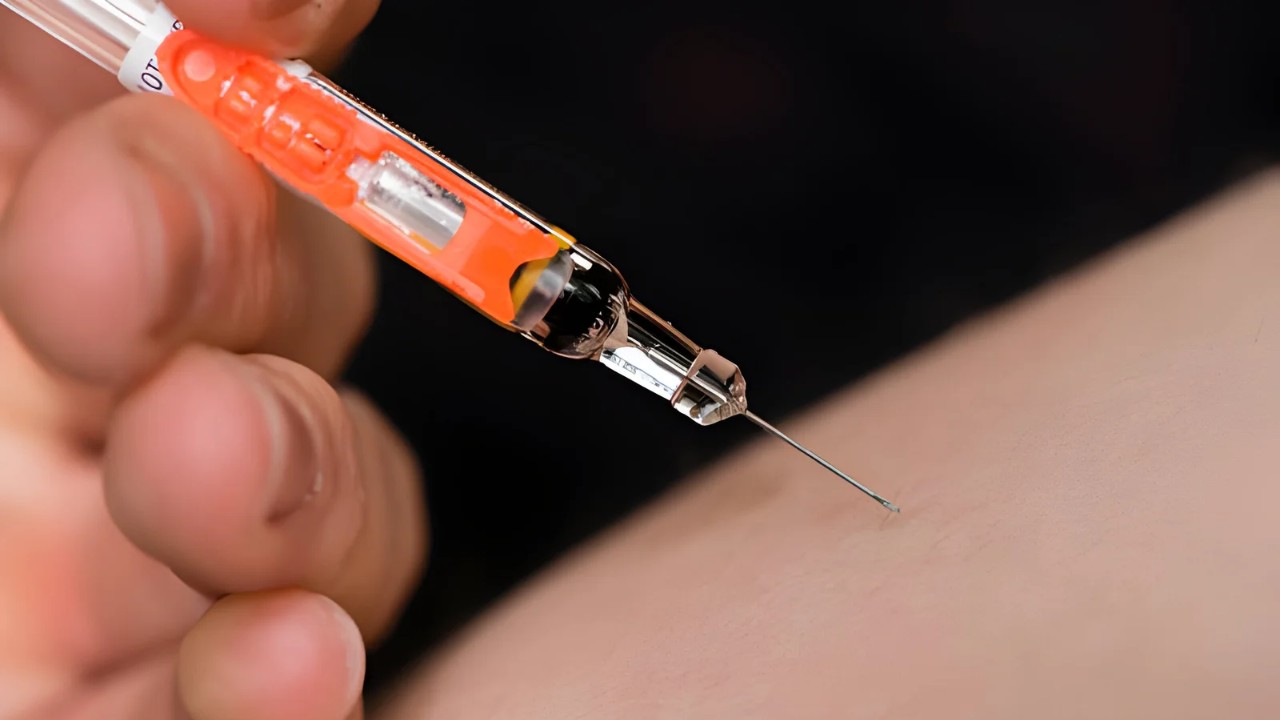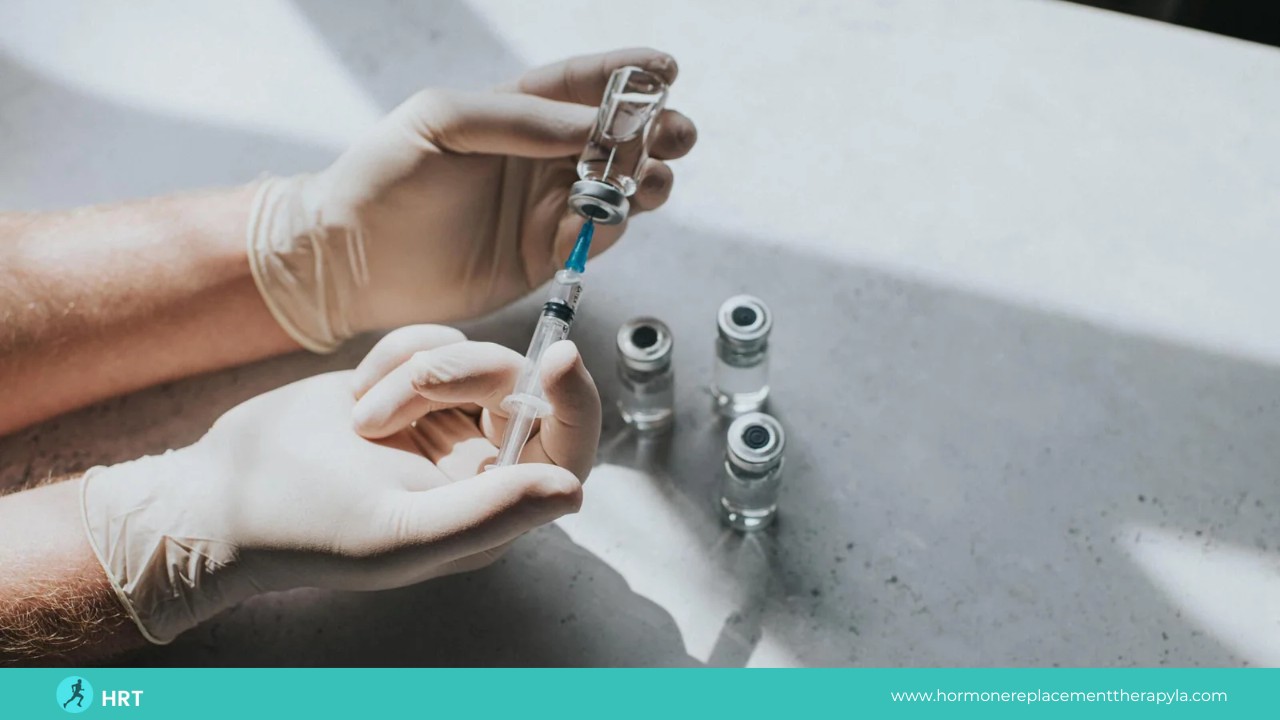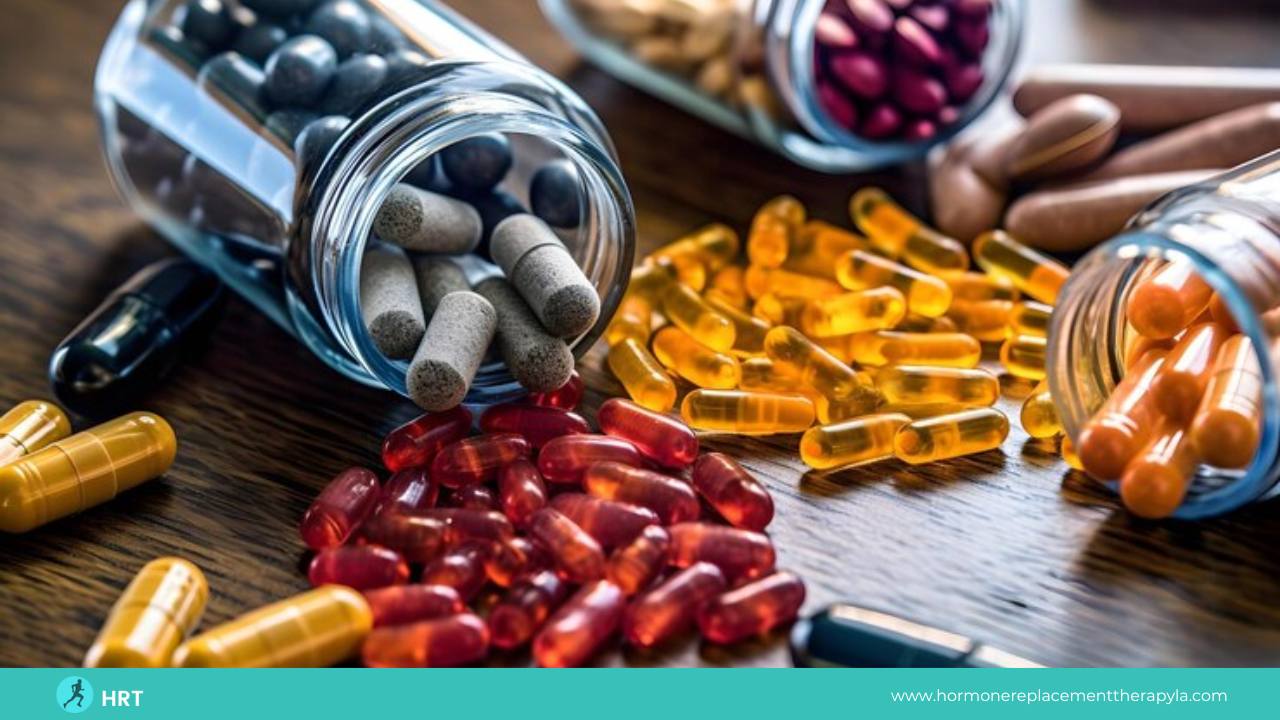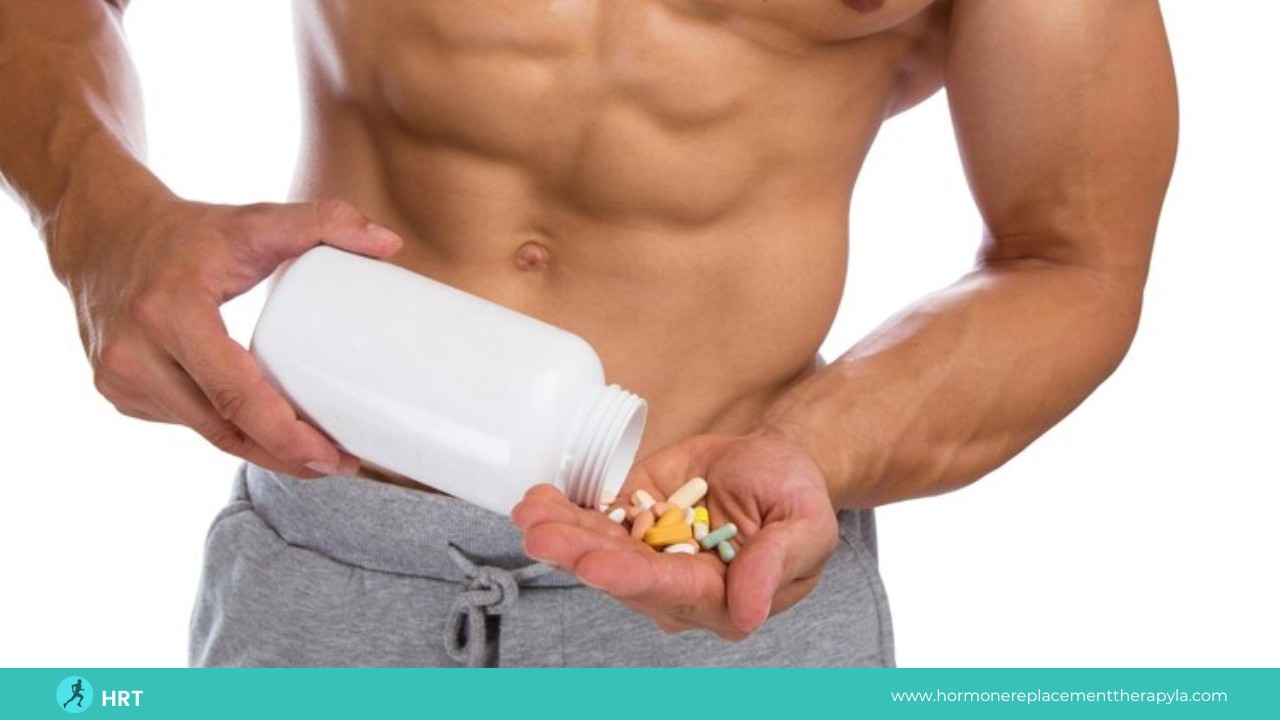Deciding to explore Testosterone Replacement Therapy (TRT) is a big step. It’s more than just a treatment; it’s a journey towards feeling like yourself again. But with significant steps come big questions, especially about safety. That’s why getting informed is crucial.
This blog guides you through understanding TRT, dispelling myths, and highlighting the facts. With expert advice and a clear look at your health objectives, you’re not just making a choice but taking control.
Let’s dive into the world of TRT together, armed with knowledge and a clear path forward.
What is Testosterone Replacement Therapy (TRT)?
Testosterone Replacement Therapy (TRT) is a medically supervised treatment designed to address conditions characterized by low testosterone levels, such as hypogonadism.
This condition, either present from birth or developed later in life, leads to insufficient testosterone production, affecting a man’s health, sexual function, and overall quality of life.
TRT aims to normalize testosterone levels, alleviating symptoms associated with their deficiency and improving the well-being of those affected.
Moreover, Testosterone Replacement Therapy (TRT) can be administered through various methods, catering to individual preferences and medical considerations. These include:
- Injections: Typically given into a muscle, these deliver testosterone directly into the bloodstream at intervals ranging from weekly to biweekly.
- Patches: Worn on the skin, patches release testosterone gradually over 24 hours, mimicking the body’s natural rhythm.
- Gels: Applied daily to the skin, gels allow testosterone to be absorbed directly into the bloodstream.
- Pellets: Implanted under the skin, pellets provide a long-term release of testosterone, often over several months.
Each form of TRT has its own set of advantages and considerations, allowing treatment to be tailored to the specific needs and lifestyle of the patient.
Is Testosterone Replacement Therapy Safe: Safety Concerns And Misconceptions
When considering Testosterone Replacement Therapy (TRT), it’s essential to navigate the myriad of safety concerns and misconceptions surrounding this treatment. Understanding the distinction between evidence-based risks and myths is crucial for anyone contemplating TRT.
Common Safety Concerns
- Cardiovascular Disease: One of the primary safety concerns with TRT has been the potential link to an increased risk of cardiovascular disease. Some studies have suggested that TRT might elevate the risk of heart attack and stroke, particularly in men with pre-existing heart conditions. However, research in this area has yielded mixed results, and more recent studies have indicated that TRT, when carefully monitored and administered to men with clinically low testosterone levels, does not significantly increase cardiovascular risk and might even improve heart health in some cases.
- Prostate Health: The relationship between TRT and prostate health has been a subject of considerable debate. The concern stems from the belief that increasing testosterone levels could stimulate the growth of prostate cancer or exacerbate benign prostatic hyperplasia (BPH). Current evidence suggests that TRT does not increase the risk of developing prostate cancer in men with normal prostate-specific antigen (PSA) levels and without a history of aggressive prostate cancer. Regular monitoring of PSA levels is recommended for men undergoing TRT.
- Potential Side Effects: Like any medical treatment, TRT comes with potential side effects, which can include acne, sleep apnea, polycythemia (an increase in red blood cell mass), and breast enlargement. Most side effects can be managed through dose adjustments or additional treatments and are generally considered manageable within monitored therapy.
Clarifying Misconceptions
- TRT as a “Cure-all”: One common myth is that TRT is a “cure-all” for aging-related issues, promising to increase vitality and reverse the effects of aging in all men. In reality, TRT is specifically intended for men diagnosed with low testosterone levels due to hypogonadism or other medical conditions. It is not a universal anti-aging solution and should not be used to enhance athletic performance or increase strength in individuals with normal testosterone levels.
- Immediate Results: Another misconception is that TRT provides immediate results. The effects of TRT on symptoms like low energy, libido, and mood can take several weeks to become noticeable, and the full benefits on body composition might take even longer.
- Risk of Dependency: There’s also a myth that men become “addicted” to TRT. While it’s true that stopping TRT can lead to a return of low testosterone symptoms, this is due to the underlying condition causing low testosterone, not physical dependence on the therapy itself.
Evaluating the Safety of TRT
As Testosterone Replacement Therapy (TRT) gains popularity for treating low testosterone levels in men, understanding its long-term safety becomes paramount.
Recent studies and clinical trials have shed light on TRT’s safety profile, sparking discussions among healthcare professionals.
Recent Studies and Clinical Trials
A growing body of research aims to clarify the effects of long-term TRT use. For instance, a notable study published in the “Journal of the American Medical Association” examined the cardiovascular outcomes in men undergoing TRT, finding no significant increase in heart attack or stroke risk for men with and without pre-existing heart disease.
This study suggests that TRT, when administered under proper medical supervision, may not pose the cardiovascular risks once feared.
Another area of concern has been prostate health. The “Journal of Urology” featured a long-term study indicating that TRT does not significantly increase the risk of prostate cancer, a crucial finding that challenges earlier assumptions about the link between increased testosterone levels and prostate cancer risk.
However, while these findings are promising, they also highlight the necessity for individualized assessment and monitoring during TRT. For example, specific populations, such as men with a history of prostate cancer, may still be advised to approach TRT with caution.
Expert Opinions and Guidelines
Medical organizations have updated their guidelines to respond to the evolving landscape of TRT research. The Endocrine Society, for instance, emphasizes the importance of diagnosing and treating only those with clinically low testosterone levels confirmed by laboratory tests.
Their guidelines recommend against TRT for men with normal aging-related declines in testosterone levels without symptoms of hypogonadism.
The American Urological Association (AUA) echoes this selective approach, advocating TRT only in men with symptomatic low testosterone. The AUA also underscores the need for ongoing research to fully understand TRT’s implications for various health aspects, including cardiovascular and prostate health.
Experts within the field advise a cautious and personalized approach to TRT. They emphasize that while TRT can significantly improve the quality of life for men with genuine low testosterone levels, it’s not a one-size-fits-all solution. Monitoring and adjustment are vital components of safe and effective therapy.
Alternative Treatments to TRT
Several alternative treatments exist for those exploring ways to manage low testosterone levels without opting for Testosterone Replacement Therapy (TRT).
These alternatives focus on lifestyle changes, natural supplements, and herbal remedies that aim to boost testosterone levels naturally.
Lifestyle Changes
Adopting a healthy lifestyle is a cornerstone of naturally enhancing testosterone levels. Diet, exercise, sleep, and stress management have a substantial impact on testosterone production.
- Diet: A balanced diet rich in lean proteins, healthy fats, and whole grains can support testosterone levels. Eggs, fatty fish, and avocados, which are high in Vitamin D and omega-3 fatty acids, are particularly beneficial.
- Exercise: Regular physical activity, especially strength training and high-intensity interval training (HIIT), has been shown to boost testosterone levels. Consistency is critical to seeing sustained results.
- Sleep: Quality sleep is crucial for maintaining optimal testosterone levels. Aim for 7-9 hours of sleep per night to ensure the body can adequately produce testosterone.
- Stress Management: High-stress levels are associated with increased cortisol, negatively affecting testosterone. Practices like meditation, yoga, and deep breathing can help manage stress.
Natural Supplements
Specific vitamins and minerals play a crucial role in supporting testosterone production:
- Vitamin D: Often linked to testosterone levels, vitamin D supplementation has increased testosterone in men with low levels and insufficient vitamin D intake.
- Zinc: This mineral is vital for testosterone production, and zinc deficiency has been associated with low testosterone levels. Supplementing with zinc can help improve testosterone levels, especially in men with a deficiency.
- Magnesium: Similar to zinc, magnesium supports testosterone production. It also improves sleep quality, indirectly supporting testosterone synthesis.
Herbal Remedies
Several herbs have been traditionally used to support testosterone levels, with some scientific backing:
- Fenugreek: Studies suggest that fenugreek may help increase testosterone levels and improve sexual function by inhibiting enzymes that break down testosterone.
- Ashwagandha: This herb is known for its adaptogenic properties, which help reduce stress and potentially boost testosterone levels. Research indicates that ashwagandha may improve sperm quality and testosterone levels in men experiencing stress-related infertility.
Comparing Efficacy and Safety
While lifestyle changes, natural supplements, and herbal remedies can support testosterone levels, their efficacy may not match that of TRT in cases of clinically diagnosed low testosterone. TRT is specifically designed to bring testosterone levels within a normal range for those with hypogonadism, and its effects are typically more immediate and significant.
However, the alternatives offer a safer profile with minimal side effects compared to TRT, which can have potential risks and require ongoing monitoring. The scientific evidence supporting the effectiveness of natural supplements and herbal remedies varies, with more research needed in some areas.
However, for individuals with mild symptoms or those looking to enhance their overall well-being alongside or in place of TRT, these alternatives can be a valuable part of a holistic approach to managing testosterone levels.
Comparing TRT with Other Medical Treatments
When addressing low testosterone levels, Testosterone Replacement Therapy (TRT) is often the first-line treatment many consider.
However, it’s not the only medical intervention available. Other treatments, such as Selective Estrogen Receptor Modulators (SERMs) and Aromatase Inhibitors, offer alternative approaches.
Understanding how TRT compares to these options and the specific circumstances under which each is preferred is vital for tailoring treatment to individual health profiles.
TRT vs. Selective Estrogen Receptor Modulators (SERMs)
SERMs, such as clomiphene citrate, stimulate the pituitary gland to produce more luteinizing hormone (LH) and follicle-stimulating hormone (FSH), stimulating the testes to produce more testosterone.
Unlike TRT, which directly supplements the body with testosterone, SERMs aim to boost the body’s natural testosterone production.
- Pros of SERMs: They can increase endogenous testosterone production while preserving fertility, an important consideration for men wishing to have children.
- Cons of SERMs: Their effectiveness can vary, and they might not be suitable for all men, especially those with primary hypogonadism (testicular failure).
In comparison, TRT provides a direct and often more predictable increase in testosterone levels but can impact fertility and requires careful monitoring for potential side effects.
TRT vs. Aromatase Inhibitors
Aromatase inhibitors work by blocking the conversion of testosterone into estrogen, increasing the testosterone level indirectly. These are often used when high estrogen levels are a concern or in cases of secondary hypogonadism.
- Pros of Aromatase Inhibitors: They can effectively correct the testosterone-to-estrogen ratio and treat conditions like gynecomastia (enlarged breast tissue in men).
- Cons of Aromatase Inhibitors: Potential side effects include bone density loss and joint pain, requiring careful monitoring and possibly supplemental treatment to mitigate these risks.
TRT, by directly increasing testosterone levels, might be preferred in cases where estrogen levels are not disproportionately high, offering a straightforward approach to treating hypogonadism.
Circumstances Dictating Treatment Preference
Choosing between TRT, SERMs, or aromatase inhibitors largely depends on the individual’s health profile, goals, and specific circumstances:
- Fertility Concerns: Men concerned about fertility may opt for SERMs to avoid the potential negative impact of TRT on sperm production.
- Estrogen Levels: Men with elevated estrogen levels or conditions like gynecomastia might benefit from aromatase inhibitors to correct hormonal imbalances.
- Underlying Health Conditions: Certain health conditions, such as heart disease or prostate health concerns, may influence the treatment choice due to the risk profiles associated with each option.
- Age and Lifestyle: Younger men or those with specific lifestyle goals might prefer treatments that align with preserving fertility or physical fitness objectives.
Making an Informed Decision

Deciding to undergo Testosterone Replacement Therapy (TRT) or any alternative treatment for low testosterone levels is a significant step that requires careful consideration and informed decision-making.
The key to a successful outcome is understanding the full scope of the treatment, including its benefits, potential risks, and the importance of ongoing monitoring. Here’s how to make an informed decision about TRT and alternative treatments.
Thorough Evaluation and Consultation
The journey to addressing low testosterone levels begins with a comprehensive evaluation by healthcare professionals. This evaluation should include:
- Detailed Medical History: Understanding your medical background, including any chronic conditions, medications, and family history of diseases.
- Physical Examination: A thorough check-up to identify any physical signs that could indicate underlying health issues related to low testosterone levels.
- Laboratory Tests: Blood tests to accurately measure testosterone levels and other relevant markers, such as blood count, lipid profile, liver function tests, and hormone levels, including LH, FSH, and estradiol.
Consultation with a healthcare professional, such as an endocrinologist or urologist specializing in hormonal therapy, is crucial. These experts can interpret your test results, evaluate your symptoms, and recommend the most appropriate treatment plan tailored to your needs.
Personal Health Goals and Treatment Expectations
Understanding your health goals and setting realistic expectations for treatment outcomes is vital.
Whether you’re seeking to improve symptoms like fatigue, low libido, or muscle weakness, or you have broader goals related to overall wellness and quality of life, clearly communicate these objectives with your healthcare provider.
This dialogue ensures that the chosen treatment aligns with your expectations and lifestyle.
Evaluating Potential Risks and Benefits
Every medical treatment has potential risks and benefits, and TRT is no exception. It’s essential to discuss the following with your healthcare provider:
- Potential Benefits: Improvements in energy levels, mood, libido, muscle mass, and bone density.
- Possible Risks and Side Effects: These include, but are not limited to, changes in cholesterol levels, increased red blood cell count, potential impacts on prostate health, and fertility considerations.
Understanding these factors will help you weigh the pros and cons of undergoing TRT or exploring alternative treatments.
Importance of Monitoring
If you proceed with TRT, ongoing monitoring is crucial to ensure the therapy’s effectiveness and mitigate potential risks. Regular follow-up appointments will involve:
- Blood Tests: To monitor testosterone levels, hematocrit, cholesterol levels, and liver function, adjust the treatment as necessary.
- Symptom Assessment: Evaluate changes in symptoms to determine the therapy’s effectiveness and make any necessary adjustments.
- Side Effect Management: Identifying and addressing any adverse effects early on.
Final Words
Stepping into the world of TRT requires clarity and care. Armed with insights and truths, your journey toward better health seems less daunting.
Remember, the proper guidance is key. At Hormone Replacement Therapy Clinic LA, under the expert care of Dr. David Nazarian, you’re not just a patient; you’re part of a community seeking wellness and balance. If TRT is on your horizon, let’s ensure your path is safe and informed.
Dr. Nazarian is ready to provide the latest and safest TRT treatments for those in LA looking to explore their options.
Your health journey starts here.





